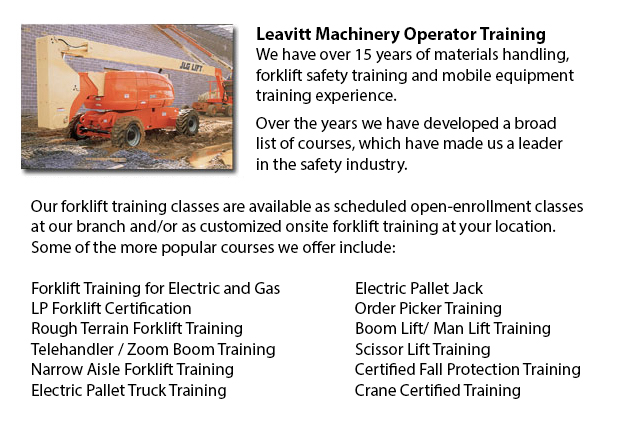
Aerial Platform Training Marysville - Aerial lifts can accommodate many odd jobs involving high and tough reaching spaces. Normally utilized to complete routine repair in buildings with high ceilings, trim tree branches, raise heavy shelving units or repair telephone cables. A ladder could also be used for some of the aforementioned projects, although aerial hoists offer more safety and strength when correctly used.
There are a number of different types of aerial hoists existing, each being capable of performing moderately unique tasks. Painters will often use a scissor lift platform, which can be used to get in touch with the 2nd story of buildings. The scissor aerial lifts use criss-cross braces to stretch out and lengthen upwards. There is a table attached to the top of the braces that rises simultaneously as the criss-cross braces elevate.
Cherry pickers and bucket trucks are another variety of the aerial lift. Usually, they contain a bucket at the end of an extended arm and as the arm unfolds, the attached bucket lift rises. Platform lifts utilize a pronged arm that rises upwards as the lever is moved. Boom lift trucks have a hydraulic arm that extends outward and elevates the platform. All of these aerial platform lifts require special training to operate.
Training programs presented through Occupational Safety & Health Association, acknowledged also as OSHA, deal with safety methods, system operation, upkeep and inspection and device load capacities. Successful completion of these education courses earns a special certified license. Only properly qualified individuals who have OSHA operating licenses should drive aerial platform lifts. The Occupational Safety & Health Organization has formed rules to uphold safety and prevent injury while utilizing aerial hoists. Common sense rules such as not using this piece of equipment to give rides and ensuring all tires on aerial hoists are braced in order to hinder machine tipping are mentioned within the guidelines.
Unfortunately, figures show that more than 20 operators die each year when running aerial platform lifts and 8% of those are commercial painters. Most of these mishaps are due to inappropriate tire bracing and the hoist falling over; for that reason several of these deaths were preventable. Operators should make certain that all wheels are locked and braces as a critical security precaution to prevent the instrument from toppling over.
Marking the neighbouring area with observable markers have to be utilized to protect would-be passers-by so that they do not come near the lift. What's more, markings should be placed at about 10 feet of clearance amid any power lines and the aerial lift. Hoist operators should at all times be properly harnessed to the hoist while up in the air.
-
Manlift Safety Training Marysville
Manlift Safety Training Marysville - It is important for experienced Manlift operators to be aware of the connected hazards which come with particular types of scissor lifts. They must be able to operate the scissor lift in a way that protects not on... More -
Forklift Operator Certification Marysville
Forklift Operator Certification Marysville - Forklift operator certification is normally required for employees working in industrial, warehouse or construction environments to guarantee the safe utilization of forklifts. Workplace training need to f... More -
Crane Training School Marysville
Crane Training School Marysville - The crane training school offers industry-relevant programs. Courses provide trainees with learning outcomes that match present industry demands. Our small class sizes combine hands-on experience and theory. Our ind... More -
Heavy Equipment Training Marysville
Heavy Equipment Training Marysville - Normally, the different kinds of heavy equipment training are divided into 2 categories of machines: those that have rubber tires and tracked vehicles. Tracked vehicles comprise items like cranes, bulldozers and... More -
Counterbalance Forklift License Marysville
Counterbalance Forklift License Marysville - Forklifts, when operated by fully trained workers, are a major advantage to companies. We provide a thorough training program covering all aspects of operating a powered lift device. Counterbalance forklif... More -
Boom Lift Safety Training Marysville
Boom Lift Safey Training Marysville - Boom lifts are a type of elevated work platform or aerial lifting device which are normally utilized in warehousing, construction and industry. Boom lifts could be used in virtually any environment due to their v... More -
Aerial Lift Training Marysville
Aerial Lift Training Marysville - An aerial work platform is a mechanical access platform. This particular machinery provides access to otherwise not accessible areas for equipment or people. Likewise called an elevating work platform or aerial devic... More -
Aerial Boom Lift Training Marysville
Aerial Boom Lift Training Marysville - For people who operate or supervise the utilization of aerial lift platforms, right aerial boom lift Training is necessary. The aerial lift platform is for lifting people, materials and tools to elevated work lo... More

Forklift Training Marysville
TOLL FREE: 1-888-254-6157
Marysville, Washington
forklifttrainingmarysville.com
Email Us
About Us


